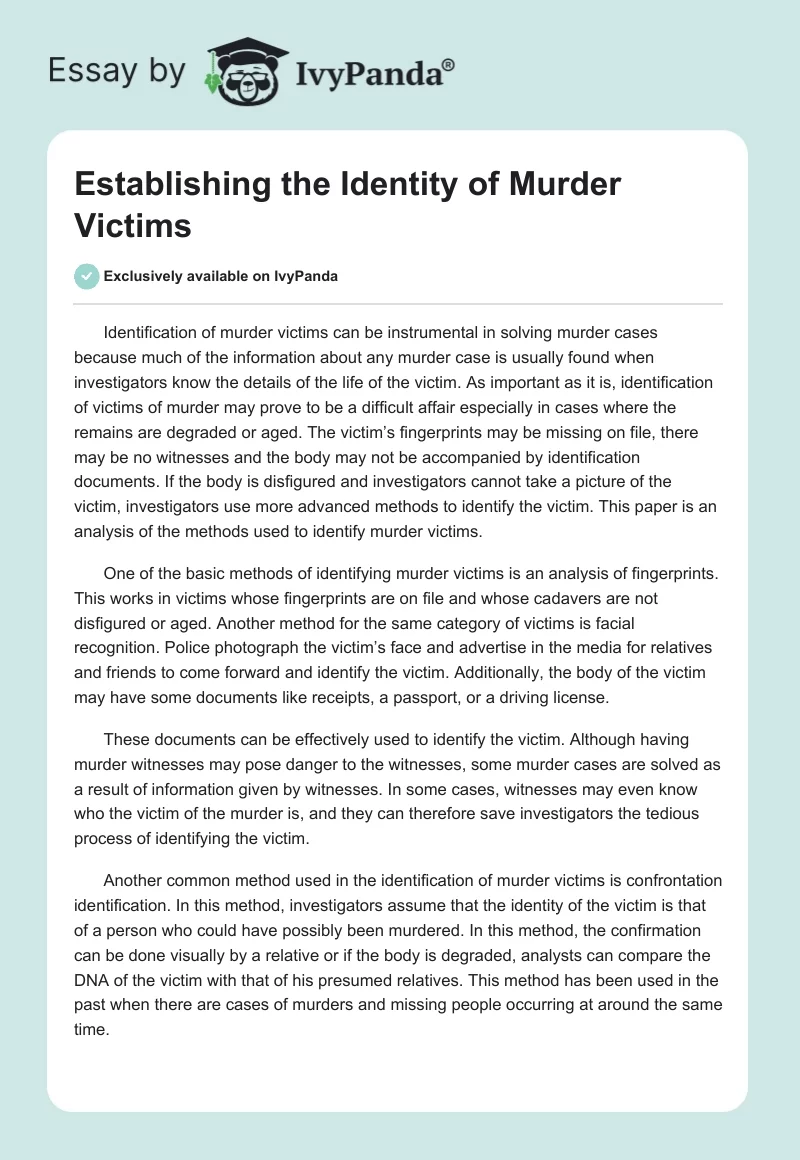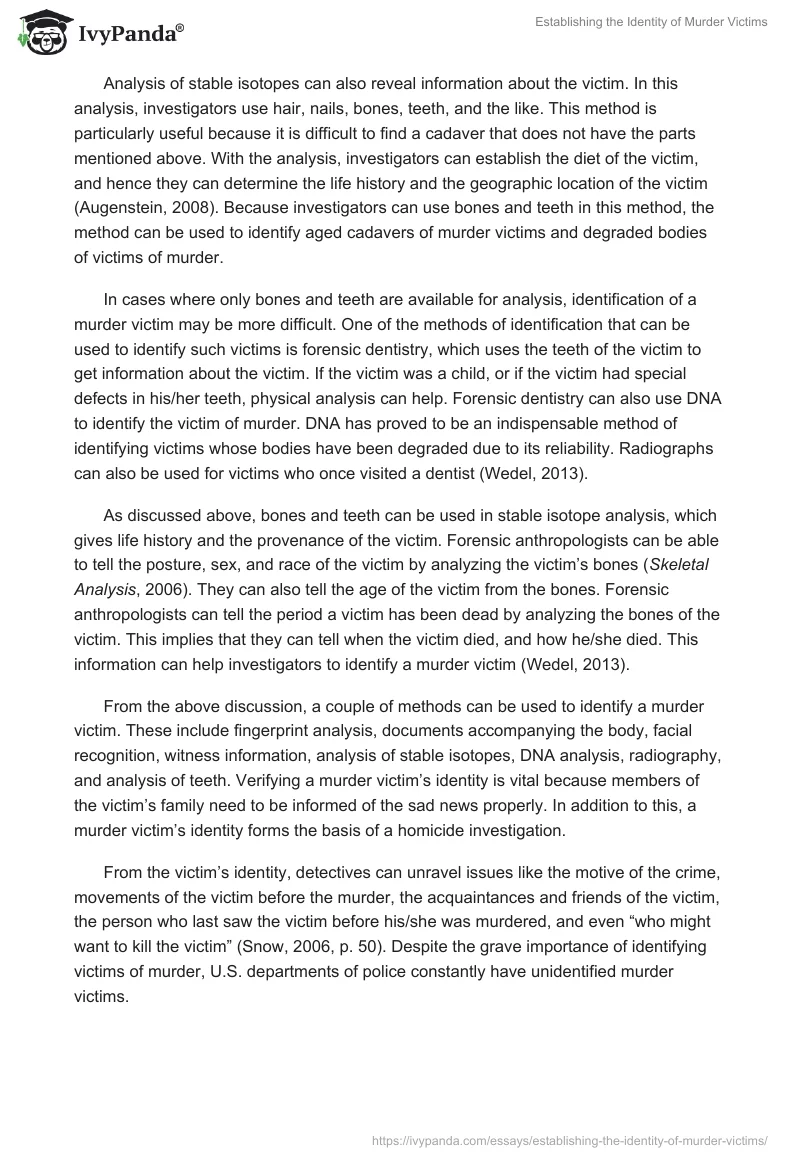Identification of murder victims can be instrumental in solving murder cases because much of the information about any murder case is usually found when investigators know the details of the life of the victim. As important as it is, identification of victims of murder may prove to be a difficult affair especially in cases where the remains are degraded or aged. The victim’s fingerprints may be missing on file, there may be no witnesses and the body may not be accompanied by identification documents. If the body is disfigured and investigators cannot take a picture of the victim, investigators use more advanced methods to identify the victim. This paper is an analysis of the methods used to identify murder victims.
One of the basic methods of identifying murder victims is an analysis of fingerprints. This works in victims whose fingerprints are on file and whose cadavers are not disfigured or aged. Another method for the same category of victims is facial recognition. Police photograph the victim’s face and advertise in the media for relatives and friends to come forward and identify the victim. Additionally, the body of the victim may have some documents like receipts, a passport, or a driving license.
These documents can be effectively used to identify the victim. Although having murder witnesses may pose danger to the witnesses, some murder cases are solved as a result of information given by witnesses. In some cases, witnesses may even know who the victim of the murder is, and they can therefore save investigators the tedious process of identifying the victim.
Another common method used in the identification of murder victims is confrontation identification. In this method, investigators assume that the identity of the victim is that of a person who could have possibly been murdered. In this method, the confirmation can be done visually by a relative or if the body is degraded, analysts can compare the DNA of the victim with that of his presumed relatives. This method has been used in the past when there are cases of murders and missing people occurring at around the same time.
Analysis of stable isotopes can also reveal information about the victim. In this analysis, investigators use hair, nails, bones, teeth, and the like. This method is particularly useful because it is difficult to find a cadaver that does not have the parts mentioned above. With the analysis, investigators can establish the diet of the victim, and hence they can determine the life history and the geographic location of the victim (Augenstein, 2008). Because investigators can use bones and teeth in this method, the method can be used to identify aged cadavers of murder victims and degraded bodies of victims of murder.
In cases where only bones and teeth are available for analysis, identification of a murder victim may be more difficult. One of the methods of identification that can be used to identify such victims is forensic dentistry, which uses the teeth of the victim to get information about the victim. If the victim was a child, or if the victim had special defects in his/her teeth, physical analysis can help. Forensic dentistry can also use DNA to identify the victim of murder. DNA has proved to be an indispensable method of identifying victims whose bodies have been degraded due to its reliability. Radiographs can also be used for victims who once visited a dentist (Wedel, 2013).
As discussed above, bones and teeth can be used in stable isotope analysis, which gives life history and the provenance of the victim. Forensic anthropologists can be able to tell the posture, sex, and race of the victim by analyzing the victim’s bones (Skeletal Analysis, 2006). They can also tell the age of the victim from the bones. Forensic anthropologists can tell the period a victim has been dead by analyzing the bones of the victim. This implies that they can tell when the victim died, and how he/she died. This information can help investigators to identify a murder victim (Wedel, 2013).
From the above discussion, a couple of methods can be used to identify a murder victim. These include fingerprint analysis, documents accompanying the body, facial recognition, witness information, analysis of stable isotopes, DNA analysis, radiography, and analysis of teeth. Verifying a murder victim’s identity is vital because members of the victim’s family need to be informed of the sad news properly. In addition to this, a murder victim’s identity forms the basis of a homicide investigation.
From the victim’s identity, detectives can unravel issues like the motive of the crime, movements of the victim before the murder, the acquaintances and friends of the victim, the person who last saw the victim before his/she was murdered, and even “who might want to kill the victim” (Snow, 2006, p. 50). Despite the grave importance of identifying victims of murder, U.S. departments of police constantly have unidentified murder victims.
Reference List
Augenstein, W. (2008). Forensic isotope analysis leads to identification of a mutilated murder victim. Journal of the Forensic Science Society, 2008(48), 153-159. Web.
Manar, E. (2006). Skeletal Analysis. Web.
Snow, R. (2005). Murder 101: homicide and its investigation. Westport, USA: Praeger Publishers.
Wedel, M. (2013). Using tooth histology to help identify a murder victim in a 37-year-old case. Web.


